Air air chicken wings
These chicken wings cooked in the air Ninja Fryer were a thing of beauty.
Chicken wings are almost universally loved and a well -known article to fry. The purpose for a fried air with air is fresh outside and the skin with a liquid inside. To prove the air ability of each furnace, I cooked three frozen wings in air mode at 450 f for 30 minutes, turning them every 10 minutes. I let each oven come in full heat before putting my arms and then photographing them immediately after I took them out. Of course, I enjoyed them too, when they were fresh enough to eat.
Success here depends on the high heat and good circulation of hot air fans, which means faster cooking. The faster it cooks an air pan and the more effective the super convection, the faster the outer skin will be fresh, making the chicken dry inside.
Ninja Foodi furnace won the big wing war from a feather, with the coolest wings after 30 minutes. They were also perfectly fluid inside and had no truly visible burns. Cuisinart also nailed the arm test, but I really had to pull them off after about 25 minutes because they were completely done. They even had a burnt skin, but not to bother me. Breville and Crux also do well with good coffee and fresh skin, while the kitchenaid finished sixth and Calphalon seven with not enough brown or brittle for my taste.
Fried fried air
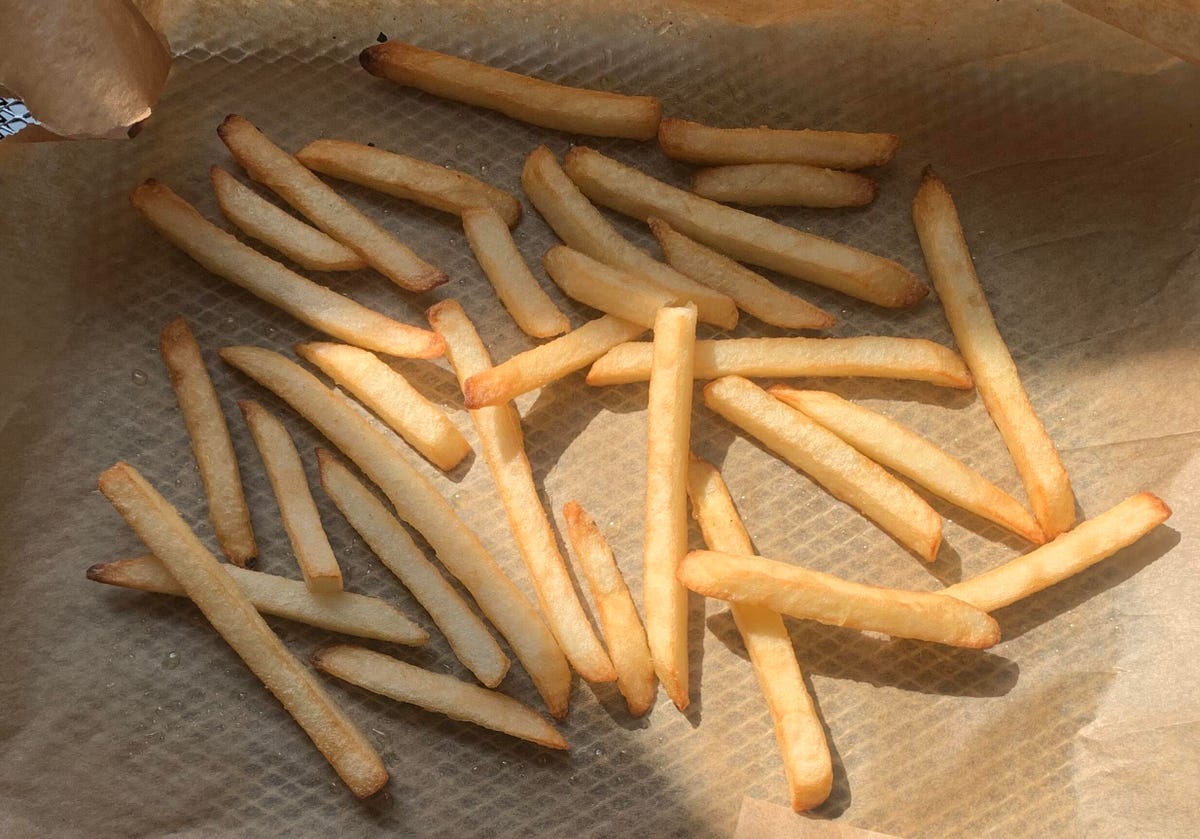
Ninja and Breville cooked French fry in a faster gold coffee without burning.
This second air air test was created to illuminate the power and clean speed of the air function of an individual air furnace, but also its ability to cook evenly. I put a small piece of frozen fries (McDonald style) in the fried air at 450 f and how quickly everyone reached that golden brown that we all covet. Because quick cooking and convenience are the main features of the countertop air fry oven, it is faster equal to better. All oven subjects (except Cuisisinart) finally arrived and some performed the task much faster and constantly than others.
Breville won the Fry test with perfect golden fries in six minutes. I placed Ninja at a slightly lower temperature (390 f) for her manual, and in eight minutes I had the perfect fry (a very narrow place and likely to have earned or tied if I would place it at 450 f). Kitchenaid also took eight minutes at 450 f while the essence took nine minutes to get there and Calphalon got 12. Cuisinart was actually faster in just three minutes, but it burned fried ends and did not cook evenly. At this point, I began to doubt that Cuisisinart has an extraordinary intense air function, for better or for worse.
Baked salmon
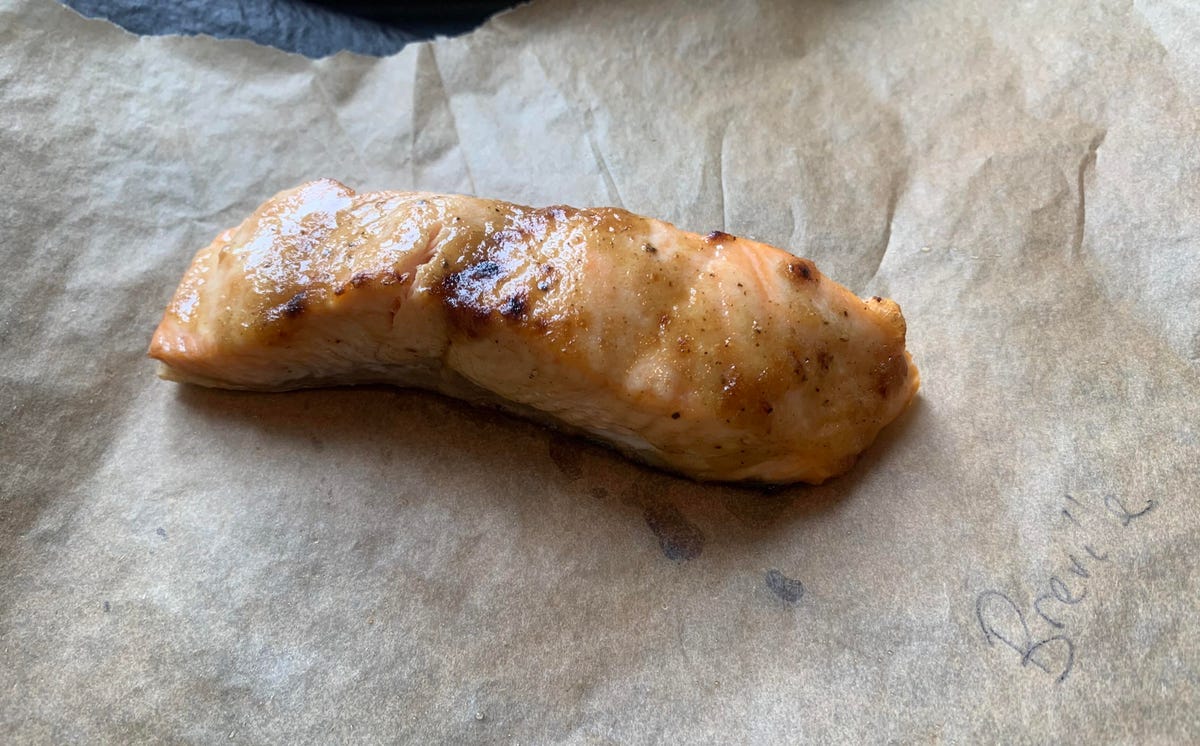
Breville and Ninja were the only ovens that distributed any kind of crust after four minutes.
To prove broiler, I made a 4-ono salmon fillet with a mustard mixture, olive oil and brown sugar. After the oven came to heat, I grabbed the salmon under the bait about 2 inches from above and left it there for four minutes before removing it from the oven for a photosession.
The main thing I asked for here was how good each broiler imported a caramelized crust on the top of the fish. Some ovens, like Calphalon and Cuisisinart, showed almost no sign of browning, while Ninja and Breville delivered pleasant colors and the beginnings of a good crust. I decided to share the blue bar for this test. Both Kitchenaid and Crux showed some browning, lowering them in third and fourth place.
Old old toast
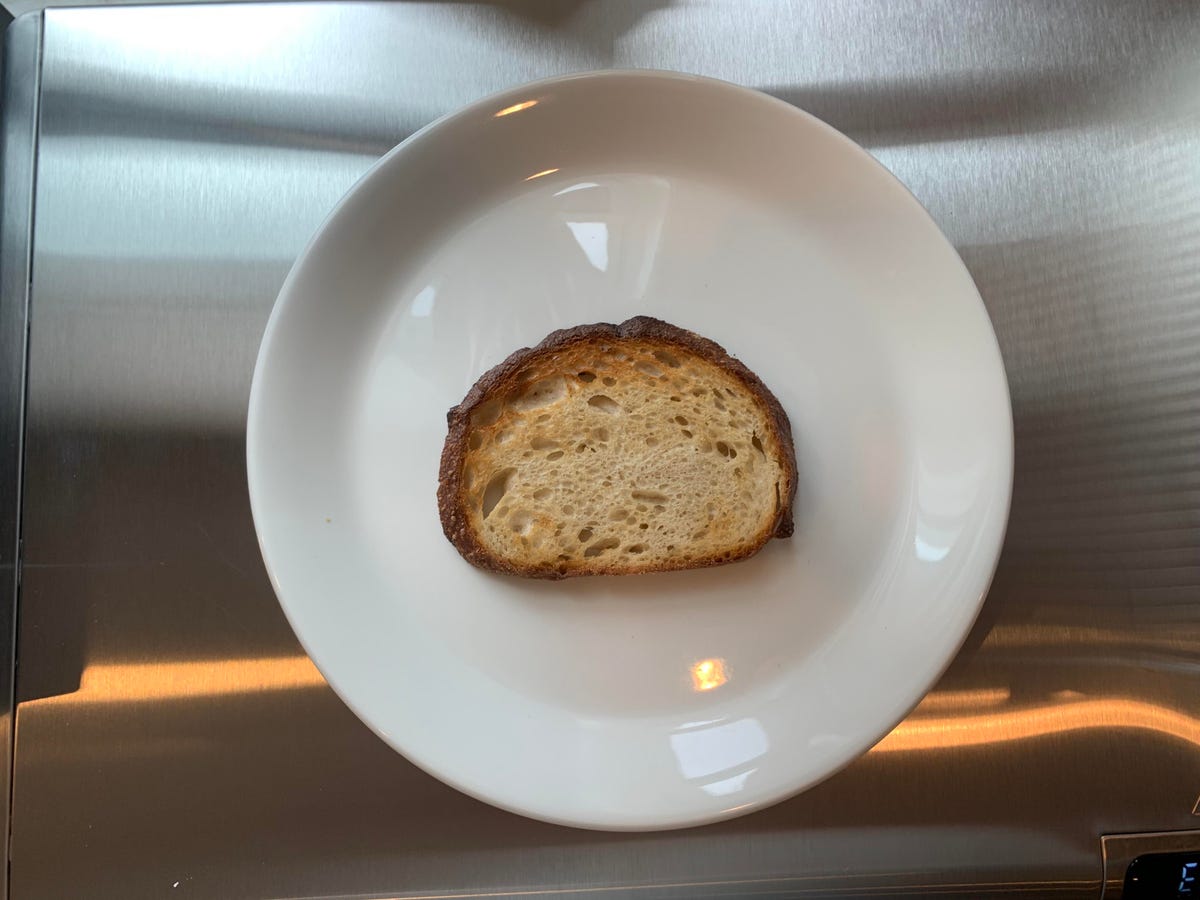
Both Calphalon and Ninja made very beautiful toasts that matched their medium predetermination, but Ninja (in the picture) made it in half the time.
This test was to see how accurate they are a special toast prefix for the oven and how fast bread and toast can. I wrapped a slice of bread in each toast and put it on the medium. I did not weigh this test as much as others because, in fact, any of these ovens will take you to the desired toast, it can simply take more time (or less) time, some predetermined interference or lesson to get it as you wish.
How long it was any time of cooking for “medium” predetermination in each oven changed quite significantly, ranging from over six minutes for Calphalon in just three and a half for ninja. As it was, these two produced the most equal and attractive toast that corresponded to the predestination, but Ninja (the winner) made it in half the time. Breville, Kitchenaid and Crux barely baked the bread at all when they settled in the medium-which simply means you will need to use a darker environment-while cuisinart exceeded the bread.
Baked cookie
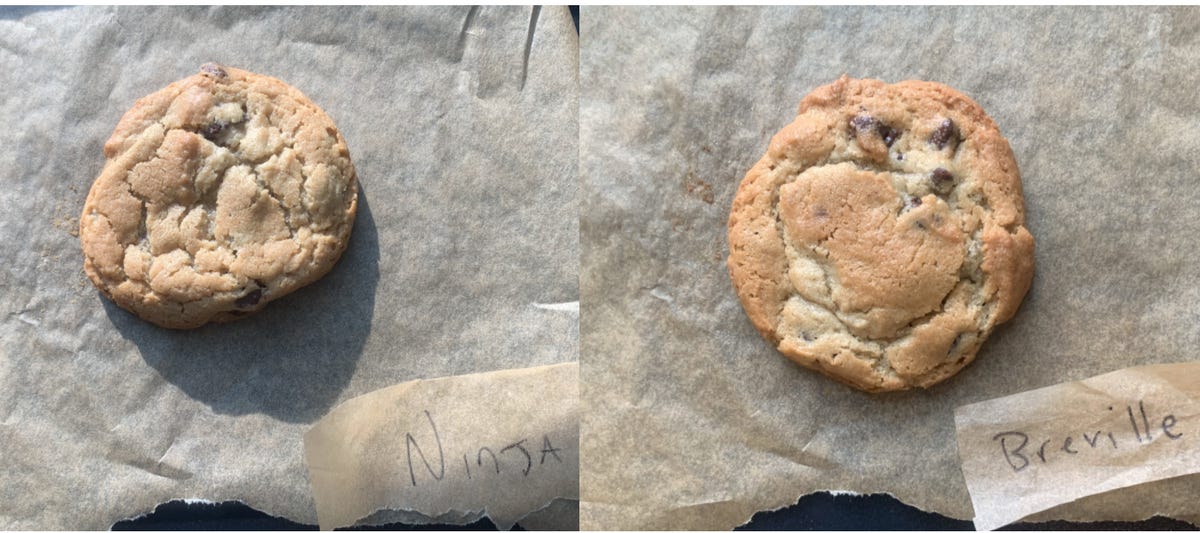
Ninja and Breville were connected to the Cookie competition after the two ovens turned out almost perfect results.
Next, I wanted to see how accurate and constantly any oven can reach and maintain a temperature, and baking a cookie is a perfect test for this. I put a spherical tablespoon worth the cookie dough on parchment paper and stuck one in each oven on the medium oven rack for the recommended time and temperature (350 f for 10 minutes).
Cookie’s race was a recent photo between Ninja and Breville, both yielding almost perfect results. Cookie Cuisisinart was overloaded, as was the essence (though only a little), while cookie kitchenaid was an underestimated tad.
premeditation
Another big draw to use a countertop oven over the large oven is the speed with which you heat. When baking cookies, I time to see how fast it came to 350 p.
Ninja Food exploded everyone else away, warming up to 350 F in a quick 50 seconds. Most others scored about three and a half minutes, while it took five minutes to come to the temp. I did not make an official test for heating the light air, but I noticed that Calphalon lasted significantly more than others to reach 450 F in air air.
Temperature accuracy and durability test
This is with one of the most important functions for any oven, especially if you plan to make a light baking on it. If an oven cannot maintain an accurate and durable temperature, this makes the following recipes much more difficult, and you will be adjusting permanently and wallowing your food to make sure it does not burn. I used power plants to read the inner oven temperature while baked for 10 minutes at 350 F. I was able to get an average temperature reading for the baking duration, but I also looked at the thermometer in real time to see how much fluctuation happened during the cook.
Kitchenaid gained this test with an average reading of 350 f in the nose and with very little fluctuation. Ninja (343 f average average), cuisinart (346 f) and breville (345 f) also did well, though Breville started very hot and then returned again. The two last place funders were The Crux, who was hot (365 f) and Calpahlon, who ran cold (337 f). Both were also more volatile in all baking.
Cleaning and care
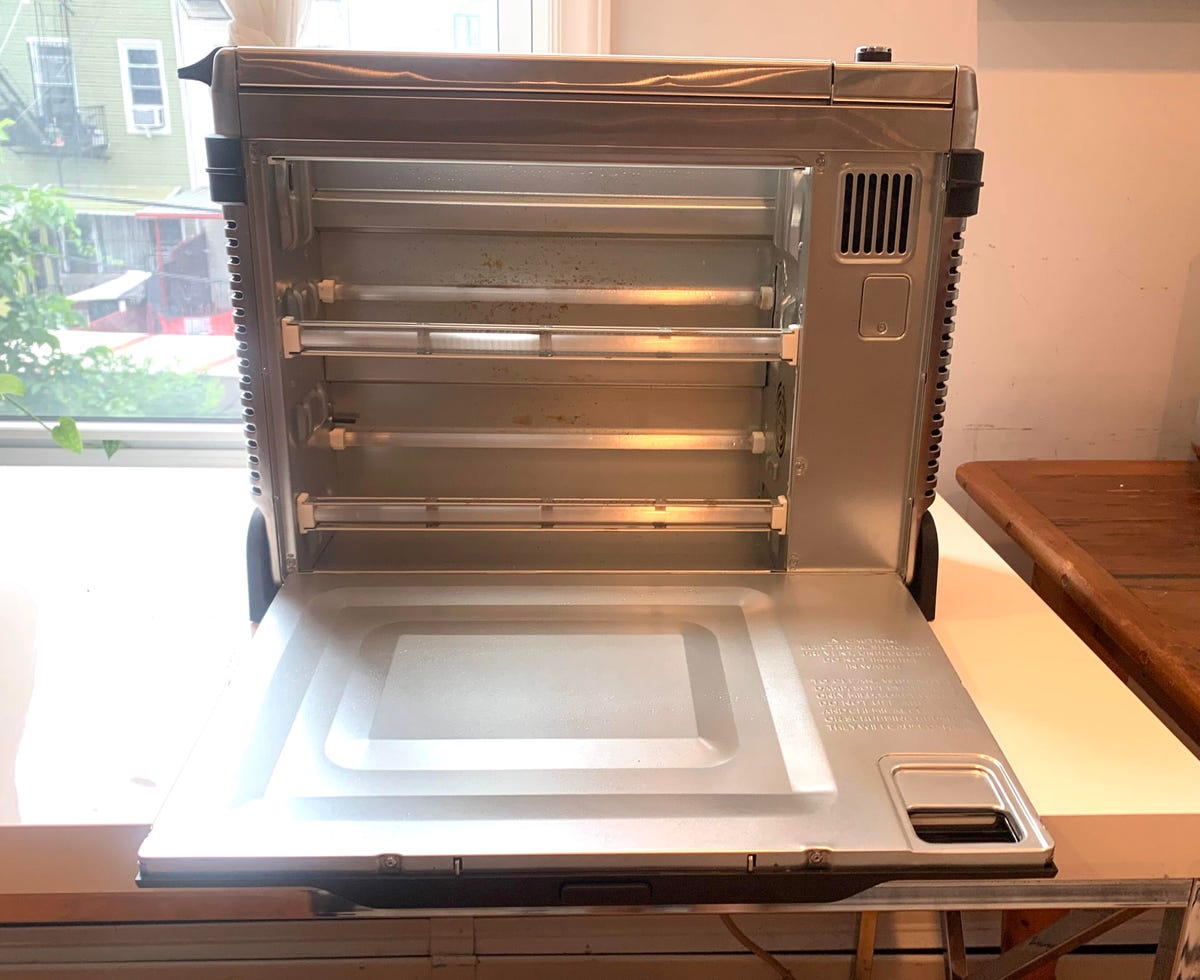
A smart design feature allows you to immediately get inside the Ninja oven and give it a good cleaning.
With the exception of Ninja (more for this in a second), there is nothing particularly unusual about the care or cleaning of these ovens and their heating elements. They have standard interiors of different sizes made of stainless steel that will require regular cleaning and wipes. Each the oven also has a crushed removable, safe dishwasher tray to catch fallen chips and delicious pieces.
Now again in Ninja. Due to the compact interior, this oven is definitely more prone to spraying and stains, especially when making fat and fat foods such as the wings. Fortunately, there is a feature of the smart design that allows the entire lower floor of the Ninja fold oven to the oven so that you can immediately get inside with a cloth or pillow of Brillo and delete it. I’m sure Ninja will require more frequent cleaning than others. If this is not something you are diligent of, it is certainly something to consider.